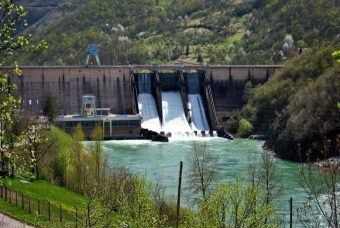
Plans for what would be the UK’s first new grid-scale electricity storage facility in more than 30 years have been given the go-ahead by the government, with construction now likely to begin in North Wales from next year.
Developer Snowdonia Pumped Hydro (SPH) was yesterday granted a development consent order by Business Secretary Greg Clark to turn two abandoned slate quarries at Glyn Rhonwy near Llanberis in Snowdonia into water reservoirs capable of storing around 700MWh of electricity.
Using surplus electricity from the national grid, the facility is designed to pump water through an underground tunnel from the lower to the upper reservoir. In response to peaks in power demand, the water will then make a return journey to the lower reservoir, driving a turbine capable of delivering 99.9MW of capacity.
Overall, the facility will be capable of supplying up to 200,000 homes with power for seven hours a day over a projected operational lifetime of 125 years or more, the developer said.
Grid energy storage is becoming increasingly important as the UK decarbonises its power generation using intermittent renewable energy sources. Battery energy storage systems have grown to prominence in recent years, but pumped hydro storage still provides more than 90 per cent of the world’s electricity storage, according to SPH.
The UK currently has four pumped hydro storage sites, the youngest of which was built with taxpayer funding more than 30 years ago.
SPH said it us now seeking private equity funding to construct the new Glyn Rhonwy scheme.
SPH managing director Dave Holmes said the planning consent decision showed the government was taking energy storage seriously. “The National Infrastructure Commission last year urged swift action on storage, and a team inside the Department for BEIS is looking urgently at how planning barriers and market disincentives to storage can be addressed,” he said. “We see the grant of permission for our Glyn Rhonwy scheme as highly significant, signalling a real change that will enable the UK to meet carbon reduction targets, while keeping electricity supply secure and prices for consumers under control.”
Holmes added that the project was expected to deliver around 32 million MWh of electricity over its lifetime. “An equivalent 700 MWh Lithium-ion installation would deliver just 2.1 million MWh before needing its batteries replacing,” he said. “This means electricity delivered by pumped hydro is twenty times cheaper per MWh than Lithium-ion batteries over its lifetime, and carries less environmental baggage.”
The Glyn Rhonwy facility is also expected create hundreds of jobs during the construction phase and up to 30 full time local positions to operate the facility.
Dr Nina Skorupska, chief executive at the Renewable Energy Association trade body, welcomed the news. “We hope that this is the beginning of many pumped-hydro projects that will be constructed in the coming years, which will improve our energy security, maximise value from already-constructed renewables, and give us a leading edge in what is a growing international market,” she said.
Source: businessgreen.com



